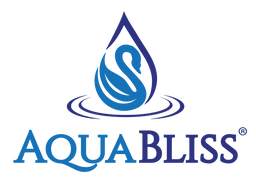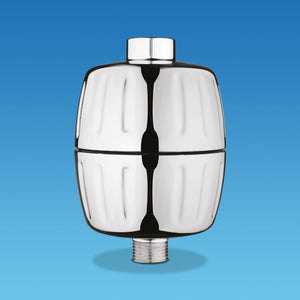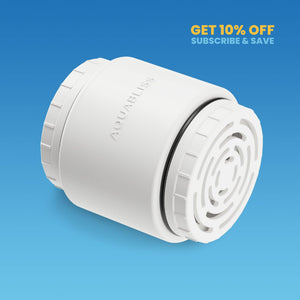Is tap water safe to drink? This is a question many people ask, especially with concerns about water contamination, aging infrastructure, and environmental health.
The answer is not always straightforward, as water safety can depend on various factors, including the condition of your pipes, your geographic location, and local regulations.
While tap water in most parts of the United States is considered safe thanks to the oversight of agencies like the Environmental Protection Agency (EPA), issues such as lead pipes, contaminants, and water treatment methods can sometimes lead to potential risks.
In this article, we will dive into the safety of drinking tap water, highlight some concerns specific to cities like Washington D.C., and explore how you can ensure that the water you consume is of the highest quality.
Why Do We Question Tap Water Safety?

The safety of tap water often comes into question due to high-profile incidents, such as the Flint water crisis in Michigan, where lead contamination created a public health emergency.
Incidents like these have made people wary of drinking water directly from the tap, and many have turned to bottled water or at-home water filters as safer alternatives. However, it’s important to note that most municipal water in the United States is well-regulated.
The EPA sets standards for safe drinking water, ensuring that public water systems meet certain quality guidelines. These standards cover the acceptable levels of harmful contaminants, such as lead, arsenic, and bacteria.
Even with these standards in place, older cities like Washington D.C. may have issues related to lead pipes and aging infrastructure. It’s crucial to understand what’s in your water and take steps to ensure that it’s safe for consumption.
How Do We Define Safe Drinking Water?
Safe drinking water is water that meets health-based standards set by regulatory bodies, free from harmful levels of contaminants like lead, bacteria, and toxic chemicals.
Tap water in the United States typically goes through a rigorous treatment process before reaching homes. This process includes filtration, disinfection, and chemical treatments to remove or neutralize harmful substances.
Yet, even with this process, certain contaminants can remain or enter the water supply through pipes and plumbing. For example, cities like Washington D.C. have struggled with lead pipes, which can leach harmful metals into the water, particularly when pipes are disturbed during construction or repairs.
This raises concerns, especially for families with young children, as lead exposure can lead to developmental issues.
Understanding the Different Water Choices
When it comes to drinking water, there are several options people commonly use:
1. Tap Water
Tap water is the most readily available and cost-effective option for most households. In many areas, it’s safe to drink straight from the tap, and it undergoes stringent testing to ensure quality.
However, depending on where you live, tap water may contain trace amounts of contaminants, such as lead, chlorine, or pesticides. To ensure your tap water is safe to drink, you can consult your local water quality report, which is often available online through your city’s water department or the EPA.
For example, Washington D.C. provides detailed reports about dc water, which includes information about contaminants, lead levels, and treatment methods. In older homes with lead pipes, it’s a good idea to invest in a filter designed to remove heavy metals.
While replacing old pipes is the most permanent solution, a filter can significantly reduce the risk of lead exposure in the meantime.
2. Bottled Water
Bottled water is another popular choice, but it’s not necessarily safer than tap water. In fact, some bottled water brands source their water from municipal taps and simply run it through a filtration process before packaging it.
While bottled water can be convenient and may taste better than untreated tap water, it comes with environmental downsides. The production and disposal of plastic bottles contribute to pollution, and bottled water is far more expensive than tap water.
If you’re concerned about the quality of your tap water, it’s often more cost-effective and eco-friendly to use a home filter rather than rely on bottled water.
3. Filtered Water
Using a water filter at home can provide peace of mind, especially if you live in an area with concerns about water quality. Filters can remove various contaminants, including lead, chlorine, and even bacteria, depending on the type of filter you use.
There are several types of filtration systems available, from simple pitcher filters to whole-house systems. Additionally, while AquaBliss specializes in high-quality shower filters, ensuring clean water for your skin and hair, their filters also help reduce exposure to contaminants like chlorine, which can be absorbed during a shower.
Is Tap Water Safe in Washington D.C.?
In cities like Washington, D.C., concerns about lead pipes and water quality have led many residents to question whether their tap water is safe to drink. DC Water has taken steps to address these concerns, including replacing old lead service lines and monitoring water for contaminants.
However, if you live in an older home or are concerned about potential contamination, using a water filter is a practical step to protect your health. The EPA recommends using filters that are certified to remove lead and other harmful contaminants, particularly if you live in an area with older plumbing.
These filters can also improve the taste and odor of your water, making it more enjoyable to drink.
Benefits of Using a Water Filter

Even if your tap water is deemed safe by local authorities, there are numerous reasons to consider using a water filter:
- Health Benefits: Filters can remove contaminants like lead, chlorine, and even pesticides, which may improve the overall healthfulness of your water. This is especially important for vulnerable populations, like young children and pregnant women, who are more sensitive to water contaminants.
- Cost-Effective: Over time, investing in a water filter can save you money compared to constantly buying bottled water. Filters also reduce the need for plastic bottles, making them an environmentally friendly choice.
- Better Taste: Many people find that filtered water simply tastes better. Removing chlorine and other chemicals can make your water cleaner and fresher, which is particularly appealing for those who dislike the taste of their local tap water.
- Convenience: With a water filter installed, you can have access to clean drinking water directly from your faucet, saving you the hassle of buying and storing bottled water.
How to Check the Quality of Your Tap Water
If you’re concerned about your water’s safety, the first step is to check your local water quality report. This report provides detailed information about contaminants, water treatment methods, and the overall safety of your drinking water.
In addition to reviewing the EPA's guidelines, you can also purchase a home water testing kit to check for specific contaminants, such as lead or bacteria. If you discover any issues, consider installing a filter or contacting your local water utility for more information.
Conclusion: Is Tap Water Safe to Drink?
So, is tap water safe to drink? In most parts of the U.S., the answer is yes. Thanks to strict regulations and regular testing, the majority of tap water meets safe drinking standards.
However, for those living in areas with older infrastructure, such as Washington D.C., additional precautions like water filters can provide peace of mind and improved water quality.
By staying informed about your local water quality, using a filter, and considering alternatives like filtered or bottled water when necessary, you can ensure that your family has access to the cleanest, safest drinking water possible.
Additionally, for those concerned about water quality during showers, AquaBliss offers high-quality shower filters that help reduce contaminants like chlorine, improving both the safety and comfort of your daily routine.







